A Simplified Guide on How a Barcode Tracking System Works
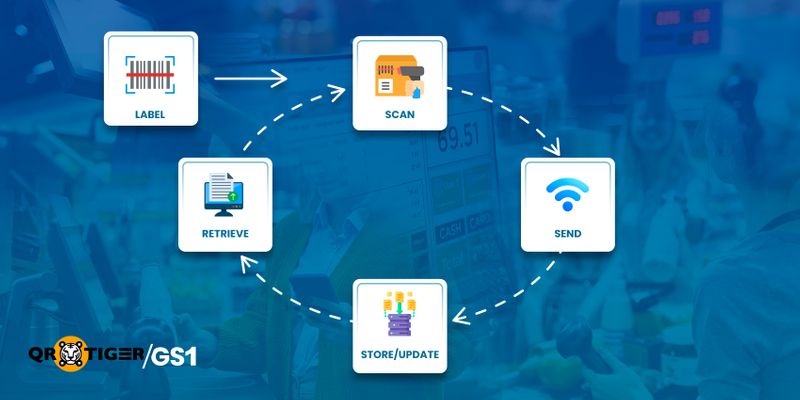
A barcode tracking system is a simple way to keep tabs on items using scannable codes. Each barcode holds key details about an item. Scanning it logs its status or location instantly..
This makes things faster, more accurate, and a lot less manual. Businesses save time, avoid mistakes, and stay on top of inventory or assets without relying on guesswork.
Barcode inventory management is common in retail stores, warehouses, hospitals, factories, libraries, and event gates.
Here’s a straightforward breakdown of how barcode tracking works, from labeling an item to following its every move.
Components of a barcode system
Every barcode system has a few key parts working together, from the physical code on the item to the software that records and manages the data.
The barcode (physical labels)
Barcodes are the printed tags that carry the data. They're placed on products, packages, tools, or equipment. Without them, there’s nothing to scan.Each barcode carries information that scanners can read and send to a system. It may include a product number, size, batch code, expiration date, or any other relevant detail. Think of it as a visual code that computers understand, like a shortcut instead of typing the details out manually.
There are two main types of barcodes used in tracking systems:
1D Barcodes: These look like a series of vertical black lines with spaces in between. Formats like UPC and EAN are common in retail. They carry a limited amount of data, usually just a number that links to item details stored in a database.
2D Barcodes: These are square-shaped and contain patterns of dots or blocks. Examples include QR codes and the Data Matrix. Yes, QR codes are barcodes, though many people mistakenly think they’re something separate.
For years, 2D barcodes were mainly used in marketing and promotions. But that’s changed. These barcode formats are now used in inventory tracking, product distribution, and retail point-of-sale systems as well.
Barcodes can be printed on different materials:
- Paper or plastic labels
- Durable tags for industrial settings
- Or directly printed onto parts (Direct Part Marking or DPM)
Correct placement and print quality matter. A smudged or badly placed barcode can’t be read. Following guidelines, like for GS1 QR code printing, helps avoid scan errors and keeps the system running smoothly.
The barcode scanner (decoder)
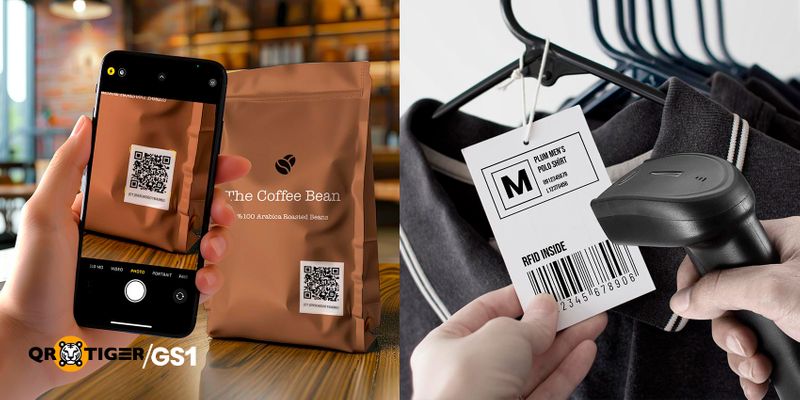
Barcode scanners are the tools that read the codes. Their job is simple: capture the barcode image, decode the data, and send it to the system.
There are different types of barcode scanners, depending on how and where they’re used:
Handheld scanners: These are the most common. You’ll see them in retail stores, warehouses, and small businesses. They’re portable and come in different forms. Some use laser beams, and others use image sensors (linear imagers) to read barcodes.
Fixed-mount scanners: These stay in one spot and scan automatically as items pass by. They’re used in high-speed setups like supermarket checkouts or warehouse conveyor belts where manual scanning isn’t practical.
Mobile or camera-based scanners: Smartphones and tablets can scan barcodes using their built-in cameras and scanning apps.
They’re cost-effective and easy to use, especially for QR codes. But they’re usually slower and less reliable when scanning poor-quality or complex barcodes.
Scanners don’t store the data; they just pass it along. The real tracking happens once the scanned data reaches the system.
The Database and Software (The "Brain")
The Database and the software are part of the system that stores, organizes, and uses the scanned information.
Central Database (Memory): This is where all the barcode-linked data is kept. Each scanned code connects to a record containing item details like product name, location, quantity, and status.
Tracking Software (Logic): This handles the “what to do or how.” It processes each scan, updates records, and keeps everything organized.
Features often include:
- Inventory tracking: Knowing stock levels and movements
- Asset tracking: Monitoring tools, equipment, or items across locations
- Search and reporting: Quickly finding item history or status.
Most systems also connect with other tools, such as accounting software, warehouse management platforms, or point-of-sale systems. That way, every part of the business works with the same updated information.
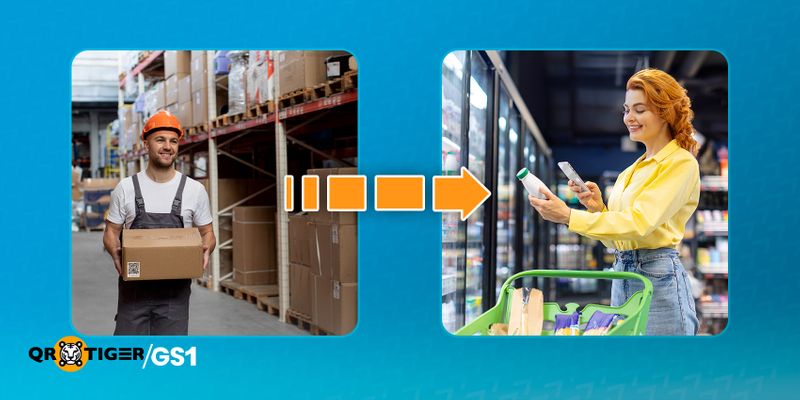
How to use a barcode tracking system: Step-by-Step
Here’s a basic look at how the system works, from creating the code to knowing where things are.
Step 1: Making the barcode (Label + Database)
Each item gets its barcode. That barcode is linked to details like the product name, price, size, and location. This info is stored in the system’s database.
Step 2: Putting the barcode on the item (Label)
The barcode is printed and stuck onto the item. It has to be placed where it won’t get damaged or be hard to scan. Good placement and label quality matter.
Step 3: Scanning the barcode (Scanner)
When the item moves or is sold, a scanner reads the barcode and turns it into digital data that the system can understand.
Step 4: Sending the data (Scanner + Connection)
The data from the scanner is sent to the system. This can be done through a USB cable, Wi-Fi, or Bluetooth, depending on the setup.
Step 5: Storing and updating the info (Software + Database)
The software receives the scanned data and updates the item’s record. It might show that the item was moved, sold, or received. Each scan can be time-stamped so you know exactly when it happened.
Step 6: Getting the info back (Software)
You can now search for an item to check where it is, how many are left, or what’s been done with it. The system can also generate reports, such as sales data or stock levels.
Step 7: Keeping track per scan (Full System)
All steps combined give you a live view of your stock or assets. This helps reduce errors, avoid overstocking, and cut down on manual checks.
Where are barcodes used
Barcode systems are used in many industries to keep things organized, accurate, and fast. It is most commonly used for product identification, often by encoding a GTIN or Global Trade Item Number.
Retail and Supermarkets
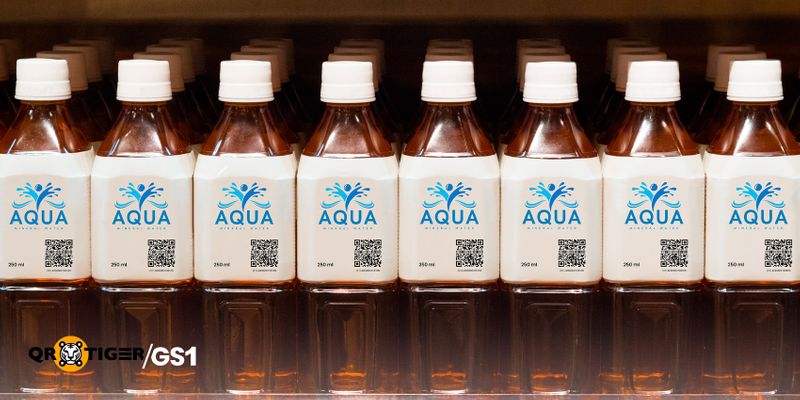
At checkout, the cashier scans the barcode on each item. This tells the system what was sold and how much stock is left.
Stores also use barcodes to track inventory, so they know when to restock shelves or reorder products.
Warehousing and Logistics
When goods arrive, workers scan the barcodes to check them in. As items move through the warehouse, they’re scanned again to update their location.
This helps with picking orders, packing, and shipping. It also prevents items from getting lost or misplaced.
Healthcare
Hospitals use barcodes to track medications, patient samples, and medical tools.
For example, scanning a barcode on a medicine bottle confirms it’s the right drug for the right patient. This helps avoid mistakes and keeps records clear.
Manufacturing
Factories track materials as they enter production. Barcodes are scanned at each stage, from raw materials to finished products.
This improves quality control and makes it easier to find out where something went wrong if there’s a defect.
Libraries
Each book has a barcode. When someone borrows or returns a book, it’s scanned to update the system.
This helps keep track of loans, returns, and overdue items.
Other Uses
- Offices use barcodes to track laptops, tools, and furniture.
- Events use barcoded tickets for faster check-ins and better crowd control.
- Schools use them for managing equipment or even checking student attendance
Benefits of Barcode Tracking Systems
Accuracy: Scanning removes manual entry errors. The system records exactly what was scanned, with no guesswork.
Efficiency: It speeds up tasks like stock checks, shipping, and checkout and reduces the time spent on repetitive work.
Cost Savings: Fewer errors and less manual work mean lower labor costs and less waste, helping to avoid overstocking or running out.
Visibility: Every scan updates the system instantly. When done properly, you always know what’s in stock and where it is.
Improved Traceability: Tracks an item’s movement from start to finish. Useful for audits, recalls, and error tracking.
Better Decision Making: Clear data helps spot trends, fix issues early, and make smart inventory or purchasing decisions.
Using 2D Barcodes in Tracking Systems
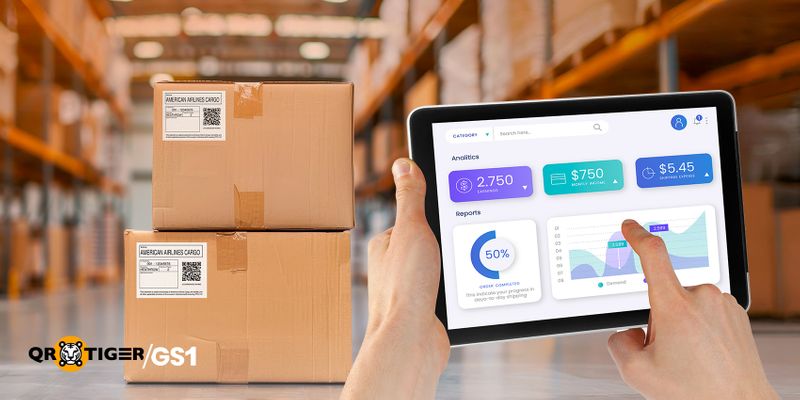
The benefits of the system are already strong for the manufacturing and retail industries. Now imagine having all that, plus more. That’s what you get when using 2D barcodes like GS1 Digital Link QR codes. These modern barcodes upgrade what your system can do.
More data in less space: GS1 2D barcodes can hold complex details like batch numbers, serial numbers, and expiry dates; far more than 1D codes allow.
Link to online content: They don’t just carry data. They can also point to websites, instruction manuals, recall pages, or product registration forms.
Consumer engagement: The same code used in tracking can be scanned by customers to view product info, verify authenticity, or access promotions.
Helps meet regulations: In industries like food and beverage, GS1 2D barcodes help meet traceability and labeling requirements without needing extra stickers.
Smarter supply chains: With richer data in every scan, you get better insight into product movement, conditions, and lifecycle..
Putting it all together
At its core, a barcode tracking system is about storing and retrieving data using machine-readable codes. It follows a clear sequence: Label → Scan → Send → Store/Update → Retrieve.
This basic process has powered supply chains, retail, healthcare, and more for decades, and it works well. The system has only seen major upgrades recently, thanks to 2D barcodes and digital tools that expand what a single scan can do.
If your work or plans involve inventory, assets, or traceability, understanding barcode tracking is a requirement. This isn’t about scanning codes; it’s about building a connected system that knows:
- Where everything is
- What’s happening to it
- And what to do next
Master this foundation, and your business stands on solid ground.
FAQ
How to track using a barcode
Tracking works by scanning a barcode linked to product data. Each scan updates the system, showing where the item is and what changed.How much does a barcode system cost?
A basic barcode setup can cost $300–$1,000. GS1 membership costs around $60–$250 yearly, depending on the country and the number of product codes needed.What industries use barcode systems?
Retail, logistics, healthcare, manufacturing, libraries, and events all use barcode systems to manage inventory, track items, and improve accuracy.DISCLAIMER: We acknowledge that GS1, as well as the materials, proprietary items, and all related patents, copyright, trademark, and other intellectual property (collectively, “intellectual property”) relating to its use, are the property of GS1 Global, and that our use of the same shall be in accordance with the conditions provided by GS1 Global.




